|
From the IAMS President
From the President, 2008–2012
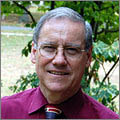
It seems scarcely possible that four years have passed since the presidential torch was handed off to me in Lake Balaton. Due to a confluence of unforseen and largely unavoidable events, the fledgling Executive at once discovered that IAMS coffers were dangerously depleted, and that they therefore faced some daunting practical challenges.
As a newly installed execuive, among ourselves there was little cumulative, easily accessible IAMS memory upon which to draw in moving forward. Dr. Gerald Anderson’s masterful history of the organization had not yet been commissioned, yet alone written; the archives and records of the organization were scattered between New Zealand, Denmark and Nijmegen. After the resignation of the duly designated IAMS President for 2004–2008, followed by the physical collapse of the General Secretary, Jan van Butselaar was pressed into heroic service until Cathy Ross succeeded him as General Secretary in August 2008. At that time, the IAMS office was relocated to the CMS headquarters, necessitating the location and transfer of all IAMS-Secretariat-related files and records to Oxford. David Singh, at the Oxford Centre for Mission Studies, was newly appointed as Treasurer; Kima Pauchua continued as Editor of Mission Studies, bedevilled by the bewilderingly confusing and sometimes impenetrable changing modus operandi of E. J. Brill, our publisher; and by virtue of my tenure as Philomena Mwaura’s vice-president, I slipped sideways into the President’s chair. Only two members of the new executive had significant experience with the organization. We were scattered around the world—Japan, Australia, Europe, United Kingdom, Nigeria, Argentina, and the United States—making regular face to face meetings out of the question, and Skype or teleconference calls difficult. And yet it has all somehow worked so that we are meeting in Toronto for the thirteenth assembly of IAMS!
From August 15–20, 200 of us will gather in Toronto. Our host—the Rev. Canon Dr. George Sumner, Principal and Helliwell Professor of World Missions at Wycliffe College—had invited us to consider coming to Toronto in his August 12, 2008 invitation, read at the IAMS business meeting in Lake Balaton: “As you know,” he wrote, “Toronto is one of the great world cities, and would be most appropriate for your kind of gathering due to its pluralistic nature and infrastructure. Wycliffe would be happy to host your assembly in 2012 ….”
And in August we will be there, the facilities and staff of Wycliffe College freely (sic!) at our disposal. The theme being considered touches each of us, since none of us—if we trace back our ancestry far enough—comes from where we now are. We are either migrants or the descendents of migrants, no matter how incumbant we imagine ourselves to be.
As outgoing President of the organization, I am grateful for the privilege of having been able to work with the officers and members of my Executive. Those within IAMS who value continuity and who believe that the organization has a modest but important role to play in the complex and constantly evolving world of mission studies owe these men and women a debt of thanks. Meetings by Skype or teleconference were often exasperating affairs, due to limitations intrinsic to the technology, and acerbated by faulty connections that reduced some of our conversations to indecipherable bursts of hissing and static. Despite these and other challenges, your Executive persevered, sometimes at considerable personal cost of time and financial resources, to bring us to the soon anticipated August conference, and beyond.
As planning for the 13th assembly proceeded, it became clear that we would need to engage the services of a conference manager, to tend to the detailed planning of the event itself, and to facilitate coordination with the Toronto Hosting Committee. Accordingly, on December 1, 2010, we engaged the services of a highly recommended independent contractor, Ms. Ann Chow. It was agreed that although employed only half-time, she would work with the Executive Committee and with the Canadian Hosting Committee to create systems and provide logistical support for registration, housing, catering, budgeting, finances, volunteer recruits and supervision, program, speaker care, and transportation. She would, furthermore, coordinate hospitality, interpretation, the hiring of contractors, communications, print and audio visual materials, and excursions.
She has more than fulfilled our expectations. Without her professional competencies, cheerful diligence and almost infinite patience, this conference would simply have been impossible for the Executive to mount. Her contract with IAMS will end on September 30, 2012. Both IAMS generally and the outgoing Executive particularly stand gratefully in her debt. Thank you, Ann!
In light of my experience as President of IAMS, I am recommending that the incoming Executive think through the subsidy allocation process once again, to make sure that available resources, always limited, are not only allocated fairly, but seen to be so distributed. This means crafting a formula that is simple, transparent, nuanced, easy to administer, and obviously fair. In my eight years as a member of the Executive, the allocation of subsidies has been among the most time consuming and onerous of our duties. There is never enough money and the formulas devised never quite measure up to everyone’s understanding of fairness.
Furthermore, I hope that the incoming Executive will avail themselves of a small body of dedicated retired members who will not merely offer sage advice, but advance the interests of the organization professionally and financially. It could be referred to as the Senior Advisory Group, or SAG, a not entirely unfitting acronym. To that end, a motion to amend the IAMS Bylaws will be made at our business meeting on August. To prepare for this meeting, please click on this link, which will take you to the last newsletter, in which detailed instructions appeared. http://www.missionstudies.org/db/newsletter/iams_matters_04.html
I am hopeful that IAMS will continue to have some means of regular intra-member communication. IAMS Matters, the fledgling newsletter launched in late 2011, of which this will be the final issue under my watch, is one possibility. But it will take someone’s time, persistent hard work, and modest financial expense to carry on.
I would be remiss were I not to mention the vital role played by our officers, Dr. Cathy Ross (General Secretary) and Dr. David Singh (Treasurer). Both of these officers came to their position somewhat naively, innocently, just like the rest of us. They had no way of knowing how exacting the work would be, how intrusive it would be into their professional and family lives, or how unwittingly thankless it could sometimes be. But they persevered, learning on the job, with the result that we all experience here this week. IAMS members can be relieved and grateful that both of them plan to serve at least one additional term, providing the incoming Executive with the wisdom that comes only with experience, and which can be adequately passed on only by continuity of service. Both deserve our heartfelt thanks, and ongoing support.
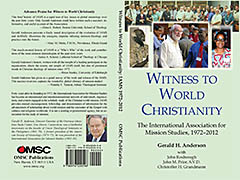 Finally, one of the most valuable legacies that the outgoing Executive has bequeathed to its posterity is Gerald H. Anderson’s masterful history of our organization, Witness to World Christianity: The International Association for Mission Studies: 1972–2012, published this year by OMSC Publications. Follow this link to read Prof. Frans Wisjen's review. As I read portions of the manuscript while it was still in process, I often lamented that I and my executive could not have known these things before we took office! Thank you, Gerald Anderson, Christoffer Grundmann, John Prior, and John Roxborogh, for this superb book! You have indeed rescued the memory of our people, and to you we and our posterity owe an immeasurable debt! Finally, one of the most valuable legacies that the outgoing Executive has bequeathed to its posterity is Gerald H. Anderson’s masterful history of our organization, Witness to World Christianity: The International Association for Mission Studies: 1972–2012, published this year by OMSC Publications. Follow this link to read Prof. Frans Wisjen's review. As I read portions of the manuscript while it was still in process, I often lamented that I and my executive could not have known these things before we took office! Thank you, Gerald Anderson, Christoffer Grundmann, John Prior, and John Roxborogh, for this superb book! You have indeed rescued the memory of our people, and to you we and our posterity owe an immeasurable debt!
Soli Deo Gloria!
Jonathan Bonk
President, 2008–2012
Email: bonk@omsc.org
From the General Secretariat

42 days to go! That is what the IAMS Conference website informs me today so it is indeed getting closer. We have had to close registrations and have a waiting list so that is enormously encouraging. We know some of you are very disappointed that you did not get subsidies - as we are. Please do remember Anne Henriksen in the Secretariat as she sends out visa letters and deals with the many queries that arise. Thank you to those who have completed registration and paid up — may I encourage you all to do so soon! Although we have 192 registrations there are still 121 incomplete registrations so this makes our conference planning difficult as we do not know how many of these incomplete registrations will actually come.
We have been informed by the publisher of our journal Mission Studies that it is to be shipped shortly. You will only receive this if you are a paid up member. So if you do not receive it, it is most likely because you have not paid up your membership fee for this year. You can check this by logging into the membership database and this will tell you when you last paid your subscription.
The current membership statistics are as follows:
deceased members: 26
honorary members: 9
inactive members: 269
paidup members (excluding Hon. Mems.): 198
Of the paidup members,
Individual Member: 191
Corporate member — small: 5
Corporate member — large: 2
So if you are one of the 269 ‘inactive members’ (ie you have not yet paid your membership subscription for this year) we look forward to welcoming you back!
All the best as you finish your papers and prepare for the Toronto conference. I am looking forward to meeting you all.
Cathy Ross
General Secretary
Email: cathy.ross@ripon-cuddesdon.ac.uk
From the IAMS Treasurer
 We are pleased and grateful to report that the association’s finances are once again on a stable footing. Between January and July of 2012 revenues totalled $151,300 (US), with an additional $12,000 in pledged support still to come. This figure includes conference fees, membership fees, and donations. For the same period, expenses totalled $108,400. Although significant conference-related expenses remain to be incurred, funds in hand are adequate. More detail will be provided at the business meeting.
We are pleased and grateful to report that the association’s finances are once again on a stable footing. Between January and July of 2012 revenues totalled $151,300 (US), with an additional $12,000 in pledged support still to come. This figure includes conference fees, membership fees, and donations. For the same period, expenses totalled $108,400. Although significant conference-related expenses remain to be incurred, funds in hand are adequate. More detail will be provided at the business meeting.
Update on payments by participants
There are currently twenty six registrants who have outstanding balances for conference fees and a further seven who have additional travel costs to reimburse to IAMS. We have been in correspondence with most of these. Altogether, sixteen registrants have not paid anything at all. Some of these are waiting to see if they get a visa before they pay their dues. Exceptionally, a few have been allowed to pay at the conference, the rest are either arranging their institutions to pay or promising to arrange for the money to be sent from their accounts. Sadly, eight of these have not responded at all to the invoices raised on 12th June or to the reminder sent last week.
David Singh
Treasurer
Email: dsingh@ocms.ac.uk
From the Conference Organizer
Conference Program Draft
To see a draft of the program for The 13th International Conference of the International Association for Missions in Toronto click here to view online or click here to download a PDF file.
Conference Status
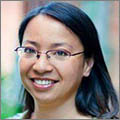
Greetings from Toronto — 42 days remain until the assembly begins! There are currently 192 registrations out of a maximum of 200, so if you are planning to attend, I would recommend registering as soon as possible. 42 countries are represented thus far, so we will be a good mix from around the globe.
Please go into your registration details to complete your flight information. We are looking specifically for when you arrive in Toronto and when you will depart. Remember to include your airline, flight number, dates and times. We will then determine whether we will provide airport shuttles for August 14 in addition to the shuttles on August 15 and 20.
Also, please pay your remaining registration fees as the payment deadline was June 1.
Here is the registration website: www.regonline.ca/iams2012.
Ann Chow
Conference Organizer
Email: achow@iams2012.org
Web Site: sites.google.com/a/iams2012.org/toronto-2012/
Biblical Studies and Mission
Toronto Conference
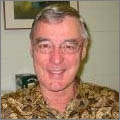
With registrations completed and BISAM Papers arriving (were due at the very latest by the end of June!), we are now looking forward to hearing from and discussing the following 16 presentations:
BISAM PRESENTATIONS:
 Felix Enegho, “Jewish Migration to and Out of Egypt (Genesis 37 – Exodus 12) in Comparison with Contemporary Migration” Felix Enegho, “Jewish Migration to and Out of Egypt (Genesis 37 – Exodus 12) in Comparison with Contemporary Migration”
(Abstract not available to BISAM Convenor.)
 P.G. George, “An Immigrant Community at the Crossroads” P.G. George, “An Immigrant Community at the Crossroads”
I propose that the Ten Commandments in the book of Exodus are a Covenant document for a ‘migrant community’ and the parallel passage in the book of Deuteronomy is the Covenant document for a ‘settled community’. I attempt to see the differences of the Decalogue in Exodus and Deuteronomy from a missional perspective.
The people of Israel made their home in the land of Canaan in Palestine. The land was fertile and people were semi-nomadic. The natural forces, like drought and famine drove the small community down to the land of Egypt and there they stayed for long 430 years. They seem to have developed a ‘new culture’ in the new-found homeland. They came out of the land with a new mandate under the leadership of Moses. They were free and they developed their new identity with a new ‘vision of God.’
How did they develop their new vision? They originally worked with the ‘semi-nomadic’ concept of God, “the God of the Fathers.” At ‘exodus’ they experienced Yahweh as the God who heard their cry and saw their struggles in Egypt and led them out of the land. They also treasured a vision of God who promised them the land of their ancestors as their inheritance, a “land flowing with milk and honey.”
The wandering in the wilderness for forty years and later the settlement of the people in the land of Canaan are juxtaposed. There is continuity and discontinuity! This paradigm is repeated in God’s history of salvation.
 Robert Gallagher, “David’s Migration & Marginal Exploits in Gath” Robert Gallagher, “David’s Migration & Marginal Exploits in Gath”
The thesis of my paper is that God’s mission to the Philistines in the Book of Samuel occurred through international narrative and song and power encounter, and that these motifs converged in David’s migration to Gath, which indirectly resulted in certain individuals and clans on a pilgrimage of allegiance to Yahweh.
In the earlier sections of 1 Samuel, God had woven his attributes into the national fabric of Philistia through narrative and song. These missional themes recalled the delivering power of the God of Israel, and in times of national distress the leaders of Philistia remembered the stories of the Exodus and the battle of Elah for guidance in their decision making.
In a situation of personal anguish, David migrated to the margins of Israelite society by seeking refuge from King Saul among Israel’s enemies in Gath of Philistia (1 Samuel 21). In undergoing dislocation from family and culture, David suffered humiliation and persecution, yet secured relationships with a number of the Philistine nobles and clans that eventually led Achish (King of Gath), the Cherethites and Pelethites (King David’s Philistine bodyguards), and Ittai the Gittite (one of David’s top three army generals) on a spiritual journey toward the God of Israel.
 Sarita Gallagher, “A Biblical Exploration of the Cross-Cultural Encounters of Abraham” Sarita Gallagher, “A Biblical Exploration of the Cross-Cultural Encounters of Abraham”
Abram enters the narratives of Genesis a nomadic foreigner following God by faith into the land of Canaan. Of unknown ethnic heritage, the text is remarkably silent on Abram’s history listing no personal achievements, no remarkable character traits and no religious background. Despite this mysterious past, it was through this unknown migrant that God chose to proclaim his greatest blessing that “in [Abram] all the nations of the earth will be blessed” (Gen. 12:3). Throughout his life Abraham continues to live as a foreigner travelling with his growing family throughout the often-hostile region of the Fertile Crescent. It is as an outsider that Abraham engages in several missional exchanges with individuals such as Abimelech, King of Gerar (20:1-18; 21:22), the Egyptian Pharaoh (12:17-20) and his own concubine Hagar (17:18-22). In this paper I will explore Abraham’s cross-cultural encounters as they relate to the fulfilment of God’s original proclamation to Abraham that through him all nations will be blessed.
 Colin Godwin, “Theological Significance of Acts 17: A Case in South Sudan” Colin Godwin, “Theological Significance of Acts 17: A Case in South Sudan”
South Sudan has experienced ethnic animosities, hatred and sentiments in most cases leading to violent clashes. This violence has always resulted in wanton destruction of property, loss of lives and leaving many people homeless. This makes it difficult for tribes to coexist as hard feelings are harbored. The method that is often used by political leaders to address this problem has been to separate the victims from the aggressors and resettle them as internally displaced people on new lands away from the aggressors, usually ending up as squatters. It is in the opinion of this writer that this approach tends to fuel new violence as it creates the desire in the victims to revenge and recover the land lost in such circumstances.
This paper seeks to propose and put forward some biblical foundations for ethnic coexistence as seen in Acts 17:24-28; the attempt is to build a theology of ethnic coexistence before presenting some implications that this theology provides for the Church in South Sudan. The implications of this paper are expected to benefit not only the Sudanese Church but also the larger African Church where similar phenomenon exists as well as assisting all the stakeholders taking part in the process of healing and reconciliation in especially in Africa. This paper uses an integrated research method, accessing theological, biblical, sociological and political research to approach the research question. In addition, twenty interviews will be carried out with key stakeholders and people who have been impacted by migration and forced resettlement.
 Craig Hendrickson, “Mission as a Placed People in Urban Culture of Displacement” Craig Hendrickson, “Mission as a Placed People in Urban Culture of Displacement”
The deconstruction and devaluing of place in Western society has been well documented (Casey 1997; Inge 2003; Bouma-Prediger and Walsh 2008). This culture of displacement—which also shapes the social imaginary of the church—has created significant mission challenges for congregations located in American’s urban centres. In this paper I explore what it means for local congregations to participate in God’s mission as a placed people in an urban culture of displacement. Drawing heavily on the work of Walter Brueggemann (2002) and John Inge (2003), I carry out this task by examining the themes of placement (land), displacement (exile), and re-placement (homecoming) in the biblical narrative, establishing that God’s desire is for his church to be a placed people as they participate in His missional initiatives in our current culture of displacement. Through an analysis of Jeremiah 29 and Luke 10, I further demonstrate that mission as a placed people is a call to radical dwelling among our neighbours characterized by reciprocal hospitality. I suggest that this requires humanized relationships characterized by mutuality and interdependence that will lead us towards embodying God’s shalom in our communities.
 Paul Hertiz, “Jesus’ Migration & Liminal Withdrawals in Matthew” Paul Hertiz, “Jesus’ Migration & Liminal Withdrawals in Matthew”
Jesus enters and participates in the multicultural and migratory context of “Galilee of the Gentiles,” rooted in a history of invasion, migration, exile, and return. He eradicates boundaries, barriers, and borders in his childhood and adulthood journeys.
This study explores the nuances and contexts of the verb “withdrew,” occurring in key turning points in Matthew’s gospel. It depicts Jesus’ movement from the centre to margin as a place of refuge and transformation (Mt 2:23; 4:12). As a prelude to Jesus’ encounter with the Canaanite woman, “Jesus withdrew to the region of Tyre and Sidon” from Pharisees and scribes who came from Jerusalem to interrogate him about matters of the law (15:1,21). This withdrawal from Jerusalem leaders served as an entrance into Gentile territory. Matthew’s use of “withdrawal” depicts a redirection of Jesus’ mission into uncharted territory.
That mission crosses over a threshold and finds refuge among Gentiles. Of the six uses of “withdrawal” (2:14, 2:22, 4:12-15, 12:15-18, 14:13, 15:21), five depict Gentile presence and activity. Jesus’ “withdrawals” that separate from the old and prepare for the new, have parallels with what anthropologists call “liminality,” which detaches from fixed, religious paradigms and leads to new paradigms of spirituality, transformation, and mission.
 Johannes Kritzinger, “Leaving Sodom Before Daybreak” Johannes Kritzinger, “Leaving Sodom Before Daybreak”
The “modified apocalyptic” of the New Testament (Bosch) can be characterized as the notion of a dynamic “overlap” between the “present age” and the “age to come”. An integral dimension of this was a sense of migrating out of the present evil age into God’s promised future, which is found in various trajectories in the New Testament. The paper explores different dimensions of “mission as migration” in the New Testament, giving attention to the way early Christians interpreted certain passages of the Hebrew Bible and inter-testamental literature. It also looks at how “mission as migration” featured in the history of Christian mission in South Africa, concluding with an argument for its continued relevance today.
 Thanh Nguyen, “Migration & Mission: The Case of Priscilla & Aquila” Thanh Nguyen, “Migration & Mission: The Case of Priscilla & Aquila”
This paper argues that early Christian migration movement, whether stimulated by mission or caused by persecution, was historically a prime factor in the expansion of the Good News of Jesus Christ and the church. The case of Priscilla and Aquila will demonstrate that the spread of the gospel was linked to migration and mission. This Judean-Christ-believing-couple was constantly on the move for the cause of the gospel. They first settled in Rome, then forced to migrate to Corinth because of the Edict of Claudius in 49 C.E., relocated in Ephesus for the purpose of evangelization, and finally returned to Rome after Claudius’ death in 54 C.E. Having experienced the trauma and travail of displacement, uprootedness, and migration, they knew the importance of being welcomed and providing hospitality to the strangers. Consequently, the examination of this model immigrant couple can inspire every Christian who is on the move to become a potential missionary.
 Gladys Ogedegbe, “Migration and Mission in Biblical Perspective: The Nigerian Situation” Gladys Ogedegbe, “Migration and Mission in Biblical Perspective: The Nigerian Situation”
From the time of Cain onwards, mankind has tended to migrate to find new pastures, new agricultural land, new security or new freedom. In Nigeria today, unemployment and by extension poverty remains a major challenge. Much of the nation’s wealth is diverted into private pockets. Jobs depend on “who you know” system. Millions of youth complete tertiary education, but many cannot find employment. Often, the only way out of this poverty trap is “urban drift” or going outside the shores of Nigeria to do menial jobs in very exploitative conditions. The findings are that the churches’ responses to the challenges of those on the margin of society have been poor. This paper therefore seeks to demand a new theology of Christian missions in line with God’s liberating rule of servanthood and Christian hospitality and concludes that if Christianity is to continue to expand in Nigeria, a practical demonstration of Christian love is required
 John Prior, “I departed full, and the Lord has brought me home empty” (Ruth 1:21) John Prior, “I departed full, and the Lord has brought me home empty” (Ruth 1:21)
Flores island in eastern Indonesia, to some extent lives from money sent back to families by economic migrants. Some of these return early bringing with them HIV/AIDS which is then passed on to their wives/husbands and sometimes to a new child. This essay looks at how some Catholic Christians are coping with this devastating failure in migration. Rejected not only by their own families but often by the local parish priest and the institutional Church they represent, these “failures” find faith within themselves. A group of such survivors of HIV/AIDS, mainly women, have articulated their resilient personal faith in conversation with the biblical Story of Ruth. This essay reflects upon their reflections, probing further and wider considerations regarding the link or non-link between deep personal faith and a culture of stark religious institutionalism.
 Kelhoukhrieno Savi, “An Inter-Tribal Reading of the Bible” Kelhoukhrieno Savi, “An Inter-Tribal Reading of the Bible”
Nagaland, a small state in the North Eastern State of India, consists of people from different tribal backgrounds speaking different languages and dialects; hold different social and political ideologies are marked by religious or denominational differences. However, Nagas being Christians in majority, one thing they share in common is the Bible. From the time the British and the American Baptist missionaries handed the Bible to the Nagas, the Bible became the most read and most loved book. Thanks to all the missionaries and the local translators who have gone through enormous pain and sacrifices to translate the Bible into the dialects of the people. Today we have access to the Bible, written in different Naga dialects, making it easy for everyone to read. However normally, readers often manipulate the Bible inconsiderately. Readers domesticate and even manipulate the text to suit their own life situation and use as a means to denounce “the other”. For instance, the Bible is also frequently quote by tribal bodies and factional groups in order to justify their political stands and ideology, or to condemn the action of the opponents. Hence often times Bible is use to divide, to judge and attack and not to unite and build mutual understanding. Therefore, in this paper the presenter would like to make an attempt to see what happens when people from different tribal background come together to read the same text from the Bible. In a context where inter-tribal disputes as well as factional conflicts are common, the intention is also to see whether Inter-tribal Bible reading can to an extent prevent misunderstanding, disparity and segregation among the Nagas and whether it can create harmony and enhance inter-tribal relationship among the Nagas.
 Batara Sihombing, “Hospitality as a Means of Mission for Migrant Workers” Batara Sihombing, “Hospitality as a Means of Mission for Migrant Workers”
In the Old Testament the people of Israel are asked to welcome the sojourners in hospitable ways since they know what it is to be sojourners (Lev. 19:34). There are several commandments regarding concern for strangers and sojourners (Deut. 10:19; Exod. 22:20; 23:9; Lev. 19:18; 19:34). Like the widow, the poor, the orphan, and the Levites, the sojourners required special care and protection (Deut. 10:18; 14:29; 16:11,14; 18:6). It was a sin to oppress and to assault the sojourners. The Greeks and the Romans also recognised hospitality as a sacred duty. Hospitality was regarded as a mark of civilisation. There was a belief that one who practiced hospitality would receive blessing, whereas one who did not, would receive punishment. Hospitality relates to kindness shown to a stranger in a place of living that is not his or her home, but nevertheless enables him or her to feel at home.
In the New Testament, hospitality is strongly asked to be practised by the believers (Rom. 12:13; Heb. 13:2; 1 Tim. 3:2; Tit. 1:8; 1 Pet. 4:9). Paul viewed hospitality as a concrete expression of Christian love. The commands to love and to show hospitality are intimately connected (Rom. 12:9-13; cf. Heb. 13:1; 1 Pet. 4:8). The Gospels describe how Jesus’ daily ministry depended on hospitality (Matt. 8:20; 9:10; Mark 1:29-31; 7:24; Luke 7:36; 8:3; 9:52; 10:38-42; 14:1; 19:5; John 12:2). Through such hospitality Jesus was able to come into contact with the sinners (Matt. 11:16-19; Mark 2:13-14; Luke 7:31-34; 19:1-10; 15:1-2). The sending of the disciples to discharge their ministry was also based on the assumption that such hospitality would be available. In short, hospitality is very important in Jesus’ ministry as well as in Paul’s mission journey.
Nowadays, there are hundreds thousands Indonesian migrant workers, and most of them are women as domestic helpers, work in overseas such as in Singapore, Malaysia, Hong Kong, Korea, and Middle East countries. The main reason for these workers leaves for overseas is poverty, and most of them are Moslem. However, in overseas they often face suffering such as persecution, rape, no salary, and so on. Supposed the believers in overseas (Singapore, Malaysia, Hong Kong, Korea, Syria) kindly and hospitably treat these Indonesian migrant workers, they will have practised mission to these sojourners. Some evidence indicated that the Moslem workers love the Christians in Indonesia, their closed-eyes about Christianity are opened, and even some of them become believers due to the hospitable treatment.
 Amy West, “Discipleship across Boundaries” Amy West, “Discipleship across Boundaries”
Humans are on the move today. This mobility, whether voluntary or compelled, exacts an emotional toll and tests one’s beliefs and commitments. The comfort of known practices and environments gives way to the uncertainty of the new context. This paper considers the complexity of the internal negotiation process that takes place when known ideas, relationships and ritual practices are confronted with input from new ideas and new relationships causing internal tension as the dislocated seek to find their equilibrium in their new place. Culturally significant events and crisis events intensify the emotional exaction as people internally negotiate their response, drawing from their traditional expectations and requirements while dealing with the input from their new context. Followers of Christ face additional questions and tensions when practices clash with the Scriptures. This paper then suggests a process to equip these followers of Christ to align their responses with the Scriptures in culturally meaningful ways.
 George Wieland, “Transnational Aspects of Mission in Acts & Auckland” George Wieland, “Transnational Aspects of Mission in Acts & Auckland”
Apart from the intentional movement into new regions inherent in the mission activity of Paul the apostle and his companions, the mission story in the New Testament exhibits several transnational aspects. The witness to the resurrection of Jesus is first received within a transnational network, by diaspora Jews returned to Jerusalem; refugees carry the witness with them as they travel; it is bi-cultural people who take the boldest border-crossing initiatives in mission; and various transnational people are prominent among those who respond. From the narrative of Acts and the personalia of some of the New Testament letters a picture emerges of transnational connectivity and partnership. In a global context of increasingly rich and complex transnational existence those aspects of the mission story of the first Christian generations may suggest possibilities for contemporary mission. This paper will explore some of those with specific reference to the experience of Auckland, New Zealand, a city whose population includes a significant proportion (37%) of migrants born overseas.
 Wen xi Zhang, “Biblical & Pastoral Reflection on the Impact of Urbanisation” Wen xi Zhang, “Biblical & Pastoral Reflection on the Impact of Urbanisation”
In the past decade, millions and millions young labourers and temporary workers rush towards different cities to look for job opportunities. They stay there until they finish a project or complete certain periods of time. Then they have to move to other areas or other cities to look for new jobs. Most of them are young. They are males and females ranging from 15 to 45 years old. Many of them go back home only once a year during Chinese New Year. Some of them cannot go back home because of the busy travelling season. As a result, for the most of the time of the year most of the young people are scattered in different cities. The church participants are those who are left at home, e.g., grandparents and grandchildren or mothers with young children.
This phenomenon of urbanization creates a huge pastoral problem. Thousands and thousands migrant workers join the floods of people in cities and they are easily getting lost when they face the new situations and temptations in big cities. There is no pastoral service to them at all. Either they do not want to go to Church or they do not know how to get there. In the most cases, their tense work does not permit them to go to Church on Sundays. The whole new two generations are missing in their faith formation. This is really alarming!
As a biblical scholar and a formator for future pastors, I would like to present two biblical modals to help us to reflect on how to minister these migrant workers in this phenomenon of urbanization. The first is the modal of Moses who leads the Israelites in the wilderness. The second is the prophets who admonish the Israelites before, during and after the exile.
In the first modal, Moses leads the Israelites in the wilderness. He accompanies them, guides them and protects them from all kinds of dangers and temptations. When the Israelites face the harsh situations, they start to complain against God and Moses. The biggest temptation is that they start to worship the golden calf. Similarly, many migrant workers in China wander around the big cities or among cities. They encounter harsh situations or unjust and sometimes cruel treatments. They curse their bosses or employers and sometimes they complain against God. Some of them worship false gods like money, sex, gambling or violence. They need figures like Moses to guide them in their struggles and challenges. I think this is the modal that we should learn from. The city dioceses should appoint some priests or Sisters to take care of the migrant workers pastorally.
This list is shorter than the 23 abstracts accepted by the IAMS Executive, however we are still planning on having parallel sessions in order to give adequate time for probing key issues.
Three other presenters are still seeking bursaries from various sources; we are very much hoping they will be able to be with us in August. Eight other IAMS participants have registered for the BISAM Study Sessions, although they will not be presenting a paper.
BISAM 2012–2016: Subsequent to the three parallel sessions discussing the 16 (or 19?) papers, during the fourth and final session we shall gather as a single group to pull out key issues that have arisen from the papers. We shall also look at a possible research project for the BISAM network to undertake over the coming four years. And last, but by no means least, we shall need to propose names to be forwarded to the (new) IAMS Executive for the position of BISAM Coordinator until the next Conference (2012-2016).
BISAM History: Gerald Anderson has written a delightful and insightful history of IAMS under the title Witness to World Christianity: The International Association for Mission Studies 1972–2012. The book will be launched during the Toronto Conference. The volume also includes chapters on three of the IAMS study groups, namely DABOH: Documentation, Archives, Bibliography and Oral History (by John Roxborogh); Healing and Mission (by Christoffer Grundmann), and BISAM: Biblical Studies and Mission (by John Prior). I trust this mini-history of BISAM will assist us in our discussions in Toronto and orient us as we decide on a future direction for the network.
See the BISAM page on the IAMS website for further details of BISAM activities.
John Prior
BISAM Study Group Convener
Email: johnotomo46@gmail.com
Mission Studies; Journal of the IAMS
New Editor of Mission Studies
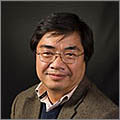
In the life of Mission Studies, the period between the quadrennial conference in 2004 (Port Dickson, Malaysia) and 2008 (Lake Balaton, Hungary) of the International Association for Mission Studies (IAMS) was a period of establishing a good working relation with Brill our publisher. As the editor, in addition to my normal editorial responsibility, I spent a good amount of time and energy on forming mutual understanding between IAMS and Brill. Unlike many academic journals, Mission Studies belongs to an active and well-knit international association of scholars. It took quite a while for Brill to understand how IAMS function, and I am happy to see that Brill has come to terms with IAMS' ways of functioning.
Due mainly to my added responsibilities at Asbury Seminary, I informed the Executive Committee of IAMS my intention to step down from my position as the editor of Mission Studies. After due search, the Committee gratefully is nominating Prof. Dr. Kirsteen Kim as the new editor. The assembly of IAMS in Toronto will vote her to be the new editor. Although the Executive Committee asked the editorial change to take place at the Toronto Conference itself, Prof. Kim feels it would be too difficult to make such a quick transition, and I agree. If voted favorably, and with the Executive's permission, we are making the change of editor at the end of the year (2012). Thus, the second issue of Volume 29 (November 2012) will be the last volume under my editorship. Prof. Kim will take over the responsibility from January 2013 and will start editing from Volume 30.
Dr. Kirsteen Kim is Professor of Theology and World Christianity at Leeds Trinity University College, Leeds, UK as well as Vice Moderator of the Commission on World Mission and Evangelism of the WCC. She is a good scholar and a great organizer. Those involved in the Study Process leading to Edinburgh 2010 would remember her graceful demeanor and great organizational skill as the Research Coordinator. A noted theologian of mission, she is an active scholar with a good number of publications to her credit especially in the area of Holy Spirit, Mission and World Christianity. Joining Prof. Kim in the editorial team are Dr. John Prior and Dr. Cathy Ross (General Secretary of IAMS). With this team, I can assure you that Mission Studies is in good hands, and I wish them well.
Lalsangkima Pachuau
Editor
E-mail: editor@missionstudies.org
Book Review:
Witness to World Christianity.
The International Association for Mission Studies
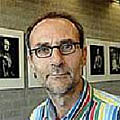
Gerald H. Anderson with John Roxborogh, John M. Prior, S.V.D., Christopher H. Grundmann, Witness to World Christianity. The International Association for Mission Studies. 1972–2012. New Haven: OMSC Publications, 2012. Pp. xi, 227. Paperback $15.00
‘Witness to World Christianity’ describes the history of the International Association for Mission Studies (IAMS), from the preparation of its founding in 1972 at Driebergen till the preparation of the Toronto meeting in 2012. The book is published on the occasion of the 40th anniversary of IAMS and is written by no one else than Gerald H. Anderson, the only person who has attended all the general assemblies. The 13 chapters deal successively with the general assemblies in Driebergen (1972), Frankfurt (1974), San José (1976), Maryknoll (1978), Bangalore (1982), Harare (1985), Rome (1988), Kaneohe (1992), Buenos Aires (1996), Hammanskraal (2000), Port Dickson (2004), Balatonfüred (2008) and Toronto (2012), and are based largely on the minutes of the Executive Committee meetings and publications of IAMS. They are preceded by a Background and concluded by an Epilogue. 90 pages are covered by Addenda (reports of study groups) and Appendices (lists of persons, places, topics). Taking into account the number of pages that each general assembly gets, it is clear that the organization grew and became more complex; whereas the history of the general assembly at Driebergen can be told in 3 pages, the one at Balatonfüred needs 17 pages. The history of the preparation of the founding of IAMS is as interesting as the histories of the general assemblies themselves. Olav Guttorm Myklebust first suggested the need for an international organization for “scientific missionary research” in 1945, and again in a booklet published in 1951. Whereas in the United States the proposal was “quite favorably received”, in Europe the response was “rather disappointing”. It was thought that “American academic standards were not high enough” and “adequate financial support would not be forthcoming” (1). It would be interesting to know how the Founding Fathers would evaluate this now. This book shows that in its 40 years of existence the scope of IAMS has shifted from ‘missionary research’ (which suggests that in the beginning, research itself was considered to be ‘missionary’) to ‘mission studies’ as a well established academic discipline. IAMS has become truly international (from a mere European to a real global organization), truly interdenominational (from a mainly Protestant organization to an organization that includes Catholic, Orthodox, Evangelical and Pentecostal scholars) and truly interdisciplinary (from mainly theological to also historical and anthropological studies). Hopefully the next historian who writes about IAMS will be able to add “truly inter-religious” (I would welcome Muslim theologians who study Islamic mission theory and practice, as also the number of departments of mission studies in Islamic universities is growing). The title of the book is misleading. World Christianity is mentioned briefly only twice; once in the title of a professorship (111) and once as a title of a study group at the Balatonfüred assembly (126). It has not become a key theme of IAMS, although in many universities ‘global Christianity’ or ‘world Christianity’ has been added to ‘mission studies’ as the name of a chair or department (as is the case with ‘comparative theology’ or intercultural theology’). And the word ‘witness’ suggests something that author of the book explicitly does not want to suggest: IAMS is not a “promotional agency” (127). It is not itself a mission organization, but an organization for the study of mission. The same would apply to World Christianity. Having said this, I think that this book is a welcome resource for mission studies and should be on the list of compulsory literature to be read by all students of this academic discipline.
Frans J. S. Wijsen
Nijmegen, Netherlands
From the Vice-President
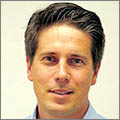
Please see previous issue for most recent report.
Mika Vähäkangas
Vice President
Email: Mika.Vahakangas@teol.lu.se
Environment and Mission Study Group

Please see previous issue for most recent report.
Allison M. Howell
Email: amaryhow@hotmail.com
Healing / Pneumatology
Pre-conference Update
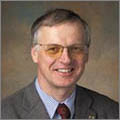
Please see previous issue for most recent report.
Christoffer Grundmann
John R. Eckrich Prof. in Religion and the Healing Arts
Valparaiso University, Valparaiso, Indiana USA
Email: Christoffer.Grundmann@valpo.edu
Documentation, Archives, Bibliography and Oral History (DABOH):
From Balaton to Toronto and Beyond
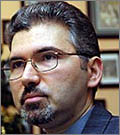
Please see third issue for most recent report.
Co-convenors:
P. Marek A. Rostkowski, OMI
Direttore della Biblioteca della Pontificia Università Urbaniana
Email: direttore.biblioteca@urbaniana.edu
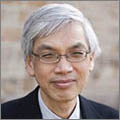
Michael Nai Chiu Poon
Director and Asian Christianity Coordinator of the Centre for the Study of Christianity in Asia
Trinity Theological College
Email: mncpoon@gmail.com
Migration, Religion and Identity: Missiological Theoretical Issues
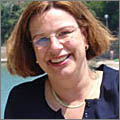
Please see second issue for most recent report.
Prof. Dr. Martha Frederiks (m.t.frederiks@uu.nl)
Dr. Dorottya Nagy (dorottya.nagy@kre.hu)
Prof. Dr. Lalsangkima Pachuau (kima.pachuau@asburyseminary.edu)
Martha Frederiks (m.t.frederiks@uu.nl
World Christianity
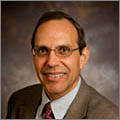
Please see second issue for most recent report.
Arun W. Jones
Dan and Lillian Hankey Associate Professor of World Evangelism
Candler School of Theology
Emory University
Email: arun.w.jones@emory.edu
Gender
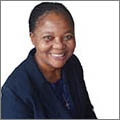
Please see first issue for most recent report.
Rose Uchem MSHR
Regional Representative Africa
E-mail: nkeonyereu4@hotmail.com
Interfaith Issues in Toronto
Please see first issue for most recent report.
David Singh
Treasurer
Email: dsingh@ocms.ac.uk
Response / Opinions / Suggestions
We would like to hear from you.
secretary@missionstudies.org
Executive Members Nominations
Please review the 'Procedure for the election of President, Vice President, and other members of the Executive Committee' in the Byelaws on page 5: www.missionstudies.org/wp-content/uploads/2011/08/iams-governance-manual-v0110811.pdf#page=5.
Address All Correspondence To
The Secretariat International Association for Mission Studies c/o Church Mission Society Watlington Road, Oxford OX4 6BZ, United Kingdom
Tel: +44 1865 787400
Fax: +44 1865 776375
E-mail: secretary@missionstudies.org
|